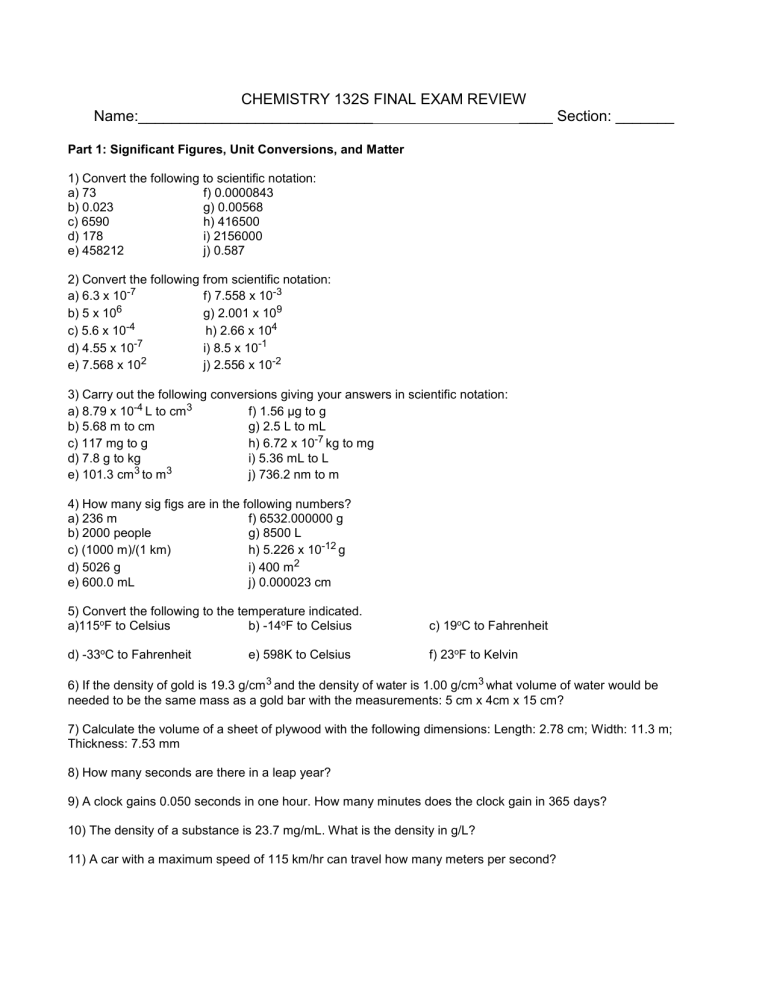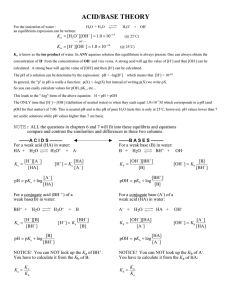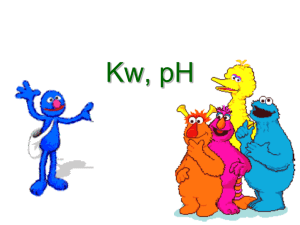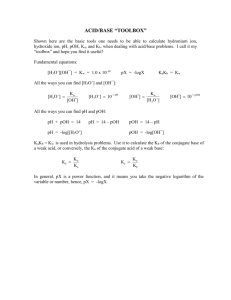
CHEMISTRY 132S FINAL EXAM REVIEW Name:____________________________ ____ Section: _______ Part 1: Significant Figures, Unit Conversions, and Matter 1) Convert the following to scientific notation: a) 73 f) 0.0000843 b) 0.023 g) 0.00568 c) 6590 h) 416500 d) 178 i) 2156000 e) 458212 j) 0.587 2) Convert the following from scientific notation: a) 6.3 x 10-7 f) 7.558 x 10-3 b) 5 x 106 g) 2.001 x 109 -4 c) 5.6 x 10 h) 2.66 x 104 d) 4.55 x 10-7 i) 8.5 x 10-1 2 e) 7.568 x 10 j) 2.556 x 10-2 3) Carry out the following conversions giving your answers in scientific notation: a) 8.79 x 10-4 L to cm3 f) 1.56 μg to g b) 5.68 m to cm g) 2.5 L to mL c) 117 mg to g h) 6.72 x 10-7 kg to mg d) 7.8 g to kg i) 5.36 mL to L e) 101.3 cm3 to m3 j) 736.2 nm to m 4) How many sig figs are in the following numbers? a) 236 m f) 6532.000000 g b) 2000 people g) 8500 L c) (1000 m)/(1 km) h) 5.226 x 10-12 g d) 5026 g i) 400 m2 e) 600.0 mL j) 0.000023 cm 5) Convert the following to the temperature indicated. a)115oF to Celsius b) -14oF to Celsius c) 19oC to Fahrenheit d) -33oC to Fahrenheit f) 23oF to Kelvin e) 598K to Celsius 6) If the density of gold is 19.3 g/cm 3 and the density of water is 1.00 g/cm3 what volume of water would be needed to be the same mass as a gold bar with the measurements: 5 cm x 4cm x 15 cm? 7) Calculate the volume of a sheet of plywood with the following dimensions: Length: 2.78 cm; Width: 11.3 m; Thickness: 7.53 mm 8) How many seconds are there in a leap year? 9) A clock gains 0.050 seconds in one hour. How many minutes does the clock gain in 365 days? 10) The density of a substance is 23.7 mg/mL. What is the density in g/L? 11) A car with a maximum speed of 115 km/hr can travel how many meters per second? 12) Complete the following: A) _____mm2 = 1 m2 B) _____km2 = 1 m2 C) _____cm2 = 1 mm2 D) _____cm2 = 1 mm2 13) Vioxx is a drug used to treat arthritis. If a patient takes one 125 μg tablet per day, how many milligrams of Vioxx are in their 1 month (30 day) supply? 14) A prescription pain reliever contains 30 mg of Codeine per tablet. The package directions recommend taking no more than 8 tablets in a 24 hour period. How many grams of Codeine per day is the maximum recommended dose? 15) What state of matter is represented by each of the following? a) ice b) clouds in the sky c) hydrogen in the sun d) rock e) air f) vegetable oil 16) Classify each of the following as either a chemical change (primarily) or a physical change. a) electrolysis of water b) separating an alcohol-water mixture c) formation of fog d) burning wood e) rusting iron f) converting sand to glass 17) Draw a graph of temperature vs. energy showing the phase changes. Be sure to label all the phases, phase changes, melting points, boiling points etc. 18) For each of the following write whether it is a mixture (M), a solution (S), or a compound (C). a) soda pop b) sugar c) milk d) muddy water e) baking soda (NaHCO3) f) pizza g) bronze 19) Define the following: a) solid e) evaporation b) liquid d) freezing c) gas f) melting d) plasma g) condensation h) sublimation i) deposition j) heat of fusion k) heat of vaporization 20) Complete the following table for the states of matter; with one being the lowest and 3 being the highest. State of matter Temperature rank (1-3) Kinetic energy rank (1-3) Distance between molecules rank (1-3) Solid Liquid Gas Part 2: Periodic Table, Bonding, and Nomenclature 1) Which atom’s radius is bigger: Bi or P; Rb or Sb? Why? Which is bigger: Mg or Mg2+? Which is bigger: Se or Se2-? Which is more electronegative: Se or Ga; Cl or At? Which has the greatest electron affinity: Y or Tc; He or Rn? Intermolecular forces rank (1-3) 2) Complete the following table: Atom/Ion/ Isotope 39K+1 Atomic # Mass # Protons Neutrons Electrons 41Ca 69Ga+3 37Cl-1 18O 235U+4 3) Naturally occurring silver consists of 51.8% Ag-107 and 48.2% Ag-109. What is the expected average molar mass of a sample of natural silver, expressed to 3 decimal places? 4) What are the long and short electron configurations for the following. Pick 2 and write the orbital configurations for them. a) P b) Cl c) Ar d) F-1 e) S-2 f) He 5) Name at least one trend among each of the following periodic families: a. Alkali Metals b. Alkaline Earth Metals c. Halogens d. Noble Gases 6) If a noble gas could form a +1 ion, which of the noble gases would form a +1 ion most easily? 7) With respect to electrons, how does an ionic bond differ from a covalent bond? 8) Indicate whether the following compounds are ionic, non-polar covalent, or polar covalent. Explain. a) NaCl b) H2O c) NO2 d) CS2 e) Al2O3 f) BF3 9) Why does a certain covalent compound have a distinct odor while a certain ionic compound has no detectable aroma? 10) How many valence electrons are there in: a) Si b) K+1 c) Ne d) O-2 e) H-1 f) N 11) Why are some solvents polar and some non-polar? Which would you use to dissolve salt? 12) Draw electron dot structures (Lewis Structures) for: a) C b) He c) P d) N e) Al 13) Write the chemical formula for the following compounds: A. chlorine tetroxide B. trisilicon tetranitride D. radium carbonate E. hydrobromic acid G. sulfurous acid H. chromium(II) oxalate J. dinitrogen pentoxide K. tungsten(V) bromide C. iron(III) hydroxide F. disilicon hexaiodide I. phosphoric acid L. tin(II) bicarbonate f) S M. mercury(I) nitrate P. beryllium oxide N. copper(I) phosphate Q. molybdenum(VI) iodide 14) Write the name of the following compounds: A. CoF3 B. PBr5 E. HNO3 F. Sn(CN)2 I. Cu(NO3)2•6H2O J. NH4NO3 M. V2O5 N. Ni3(PO4)2•8H2O Q. CS2 R. W(CN)6 C. KMnO4 G. LiOH K. N2S5 O. H3PO4 S. TaCl3 O. sulfuric acid R. ammonia D. FeC2O4 H. Na2HPO4 L. CuSO4 P. S4N2 T. Li2Cr2O7 Part 3: VSEPR Theory (Molecular Geometry and Polarity) a) In the following table draw the correct Lewis structure, indicate the molecule type (ABE format), the bond angle, molecular and electron pair geometry, indicate whether they are polar or nonpolar and which intermolecular forces they possess. Also, if it applies, draw the resonance structures. Molecule Lewis Structure Type (ABE format) Electron Pair Geometry Molecular Geometry Bond Angle Polarity And Intermolecular Forces Resonance Structures NO2+ SO3 PO43H3O+ SeO2 Li2S CHCl3 b) Rank the intermolecular forces from weakest to strongest: Part 4: Chemical Equations 1) Balance the following equations. 2) Classify each reaction as one of: synthesis(S), decomposition (D), single replacement (SR), double replacement (DR), or combustion (C). _______ a) __Sr + __O2 → __SrO _______ b) __C6H12O6 + __O2 → __CO2 + __H2O _______ c) __H3PO4 + __KOH → __K3PO4 + __H2O _______ d) __H2O→__H2 + __O2 _______ e) __Fe(HCO3)3 + __MgSe → __Fe2Se3 + __Mg(HCO3)2 _______ f) __Br2 + __KCl → __KBr +__ Cl2 Part 5: Mole Conversions Convert Moles to mass and to particles as indicated. a) Convert 36.5 g of Sodium sulfate to moles b) How many particles are there in 3.5 moles of NaCl? c) How much do 2.8 moles of silver nitrate weigh? d) 4.5 x 10^23 molecules of sugar (C6H12O6) represents this many moles? e) 4.5 g of aluminum sulfide contain this many particles of aluminum sulfide. f) 5.7 x 10^25 molecules of chlorine tetroxide weigh this many grams. Part 6: Percent Composition: Calculate the percent of H2O, Ni, P, and O in Ni3(PO4)2•8H2O. Part 7: Acids and Bases: 1. Definitions: Give the definitions for the following terms: a. Arrhenius acid b. Arrhenius base c. Bronsted-Lowry acid d. Bronsted-Lowry base e. Lewis acid f. Lewis base g. Conjugate pair h. Weak acid i. Strong acid j. Weak base k. Strong base 2. Identify the conjugate acid base pairs in the following: a. HClO2(aq) + H2O(l) ↔ H3O+(aq) + ClO-(aq) b. H2SO3(aq) + H2O(l) ↔ HSO3-(aq) + H3O+(aq) c. HSeO3-(aq) + H2O(l) ↔ H3O (aq) + SeO32-(aq) 3. Calculate the pH, [H3O+], pOH, or [OH-] as indicated: a. The hydrogen ion concentration of a soft drink is 7.3 x 10-4M. What is the pH, pOH, and [OH-] of the solution? b. The hydroxide ion concentration of a solution is 5.6 x 10-8M. What is the pH, pOH, and [H3O+] of the solution? c. The pOH of a given solution is 8.76, what is its pH, [OH-], and [H3O+]? d. The pH of a solution is 13.19. What is its [H3O+], pOH and [OH-]? 4. Neutralization problems: a. 53.7 mL of a 0.100M HCl acid is needed to neutralize 80.0 mL of KOH. What is he molarity of the KOH solution? b. What is the molarity of a CsOH solution if 29.61 mL of a 0.2500M HCl is needed to neutralize 60.00 mL of the CsOH solution?





